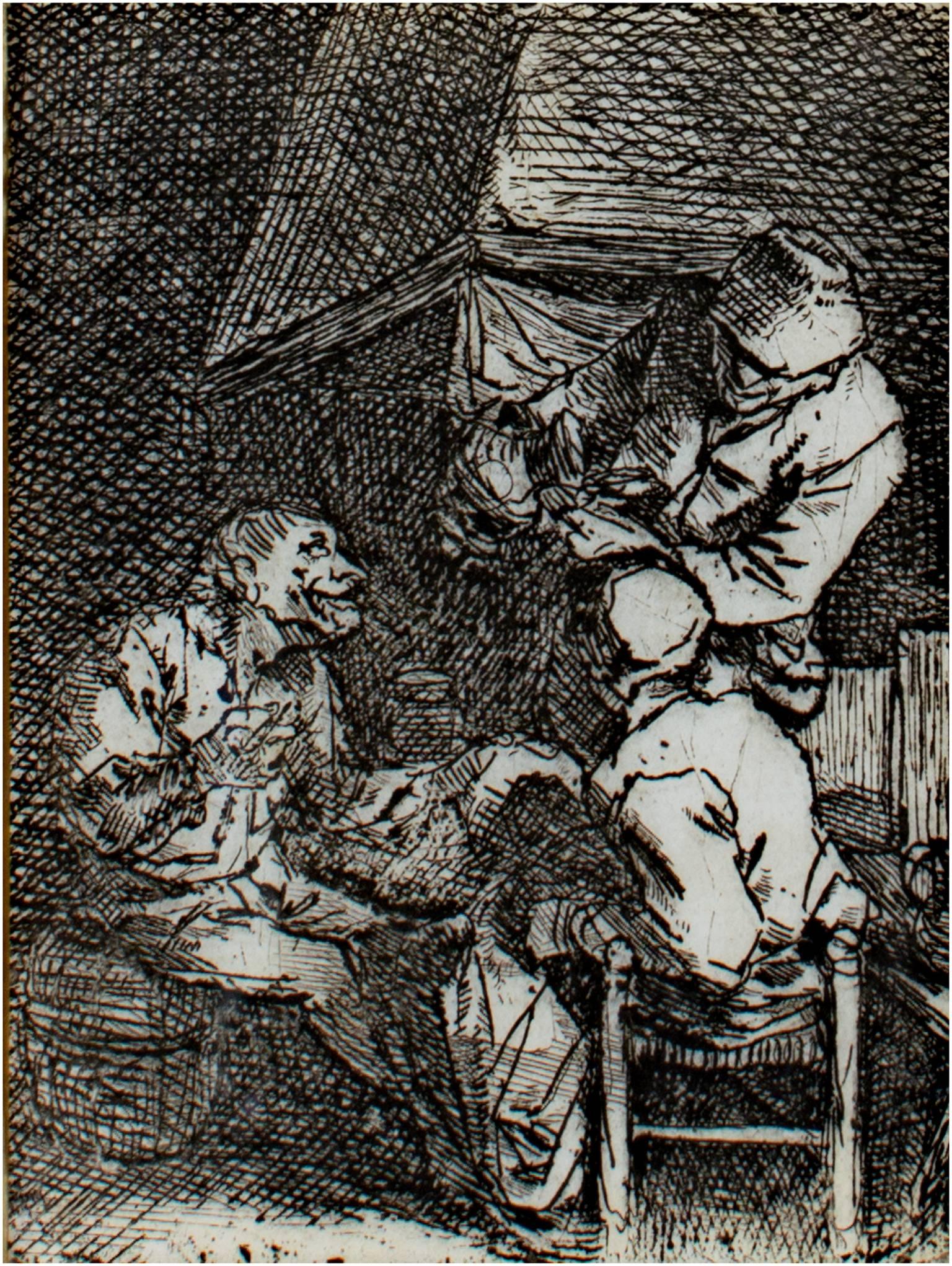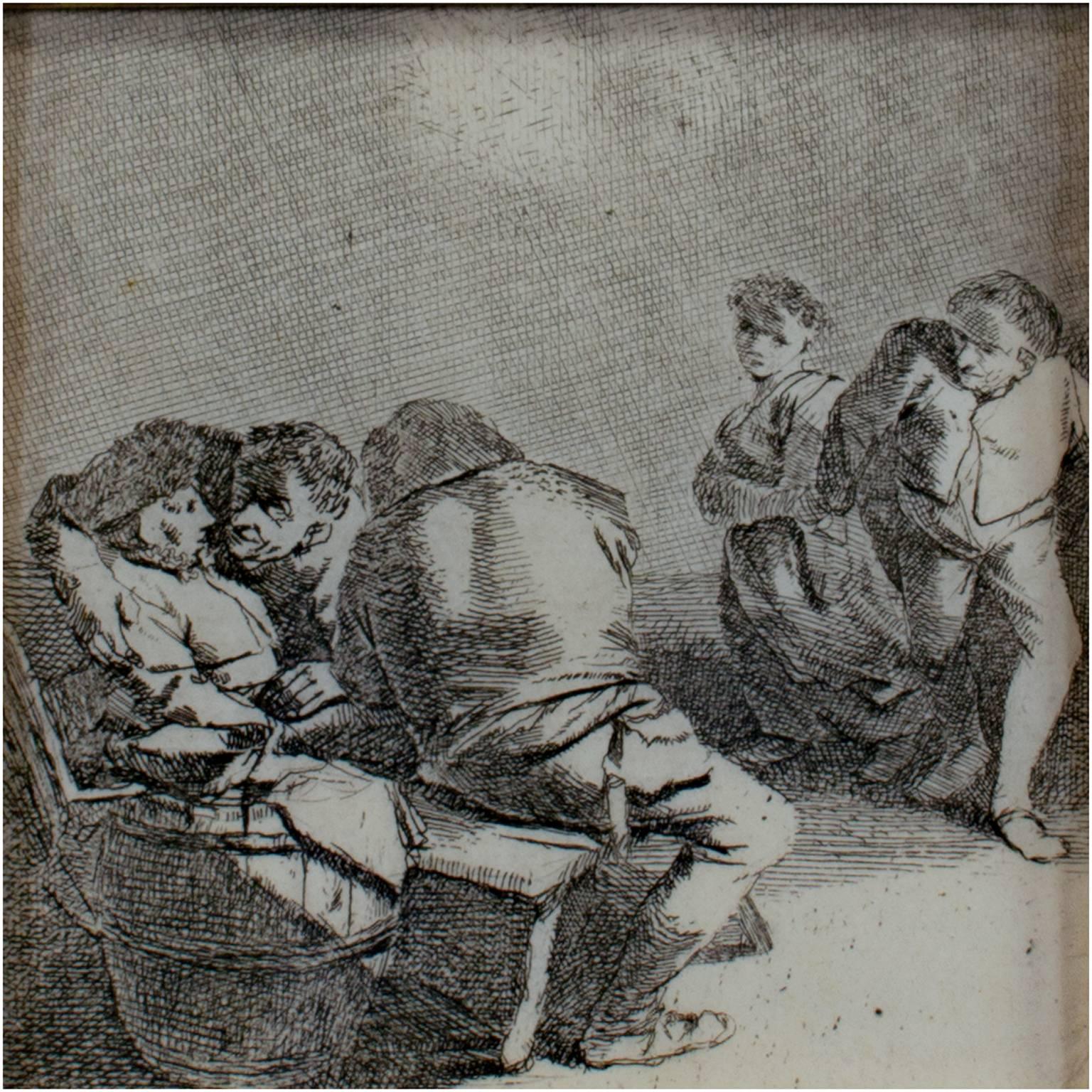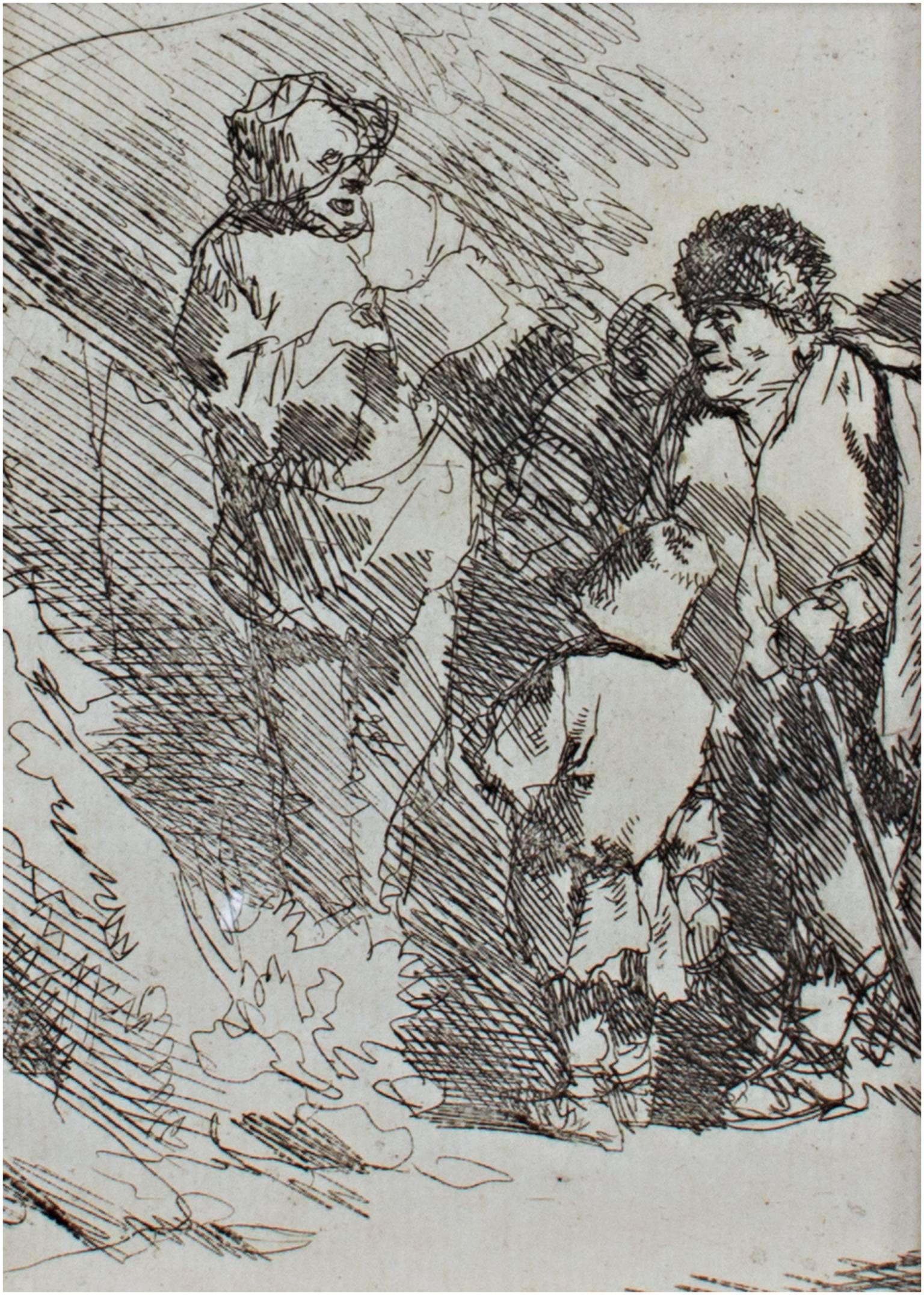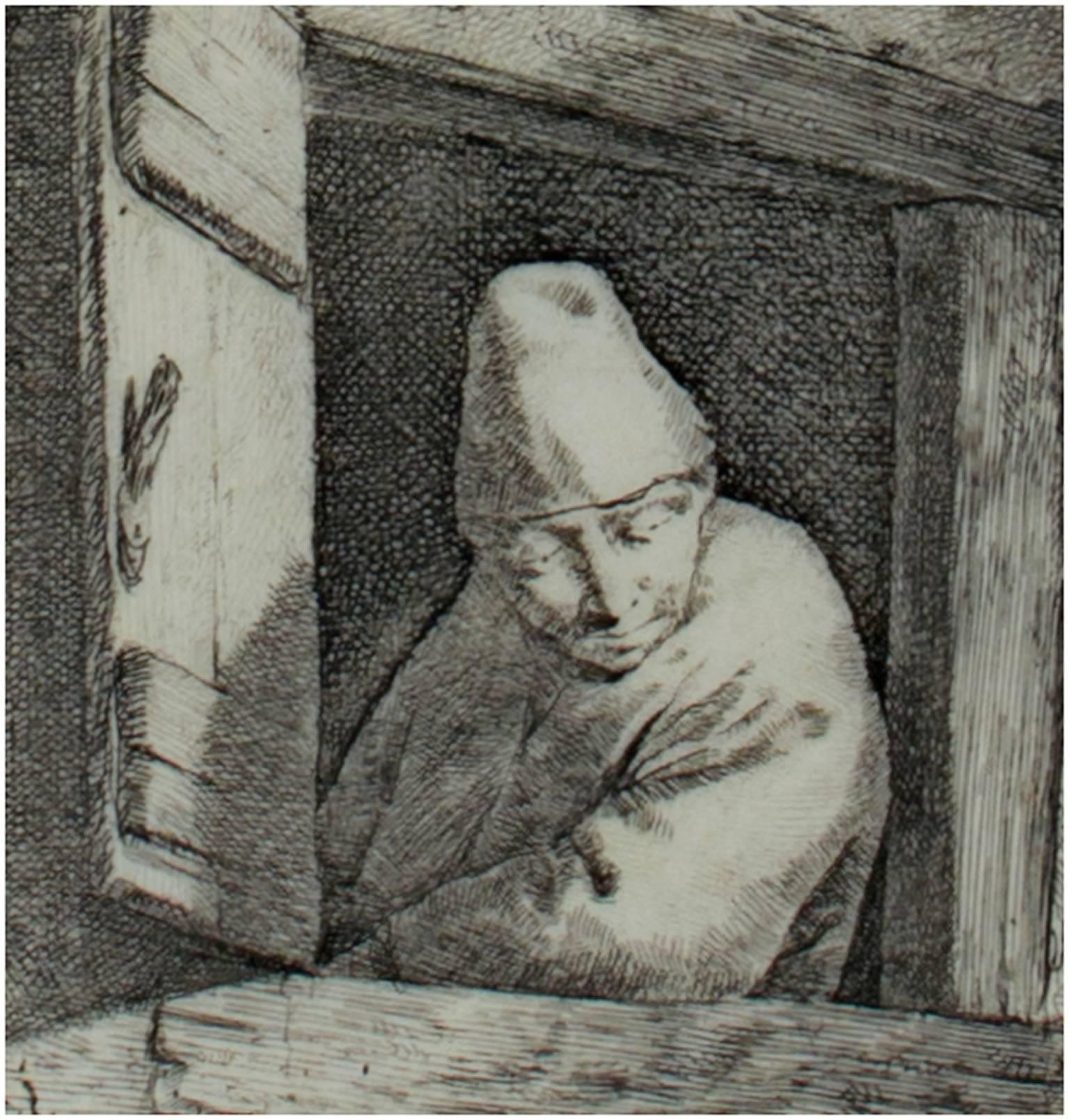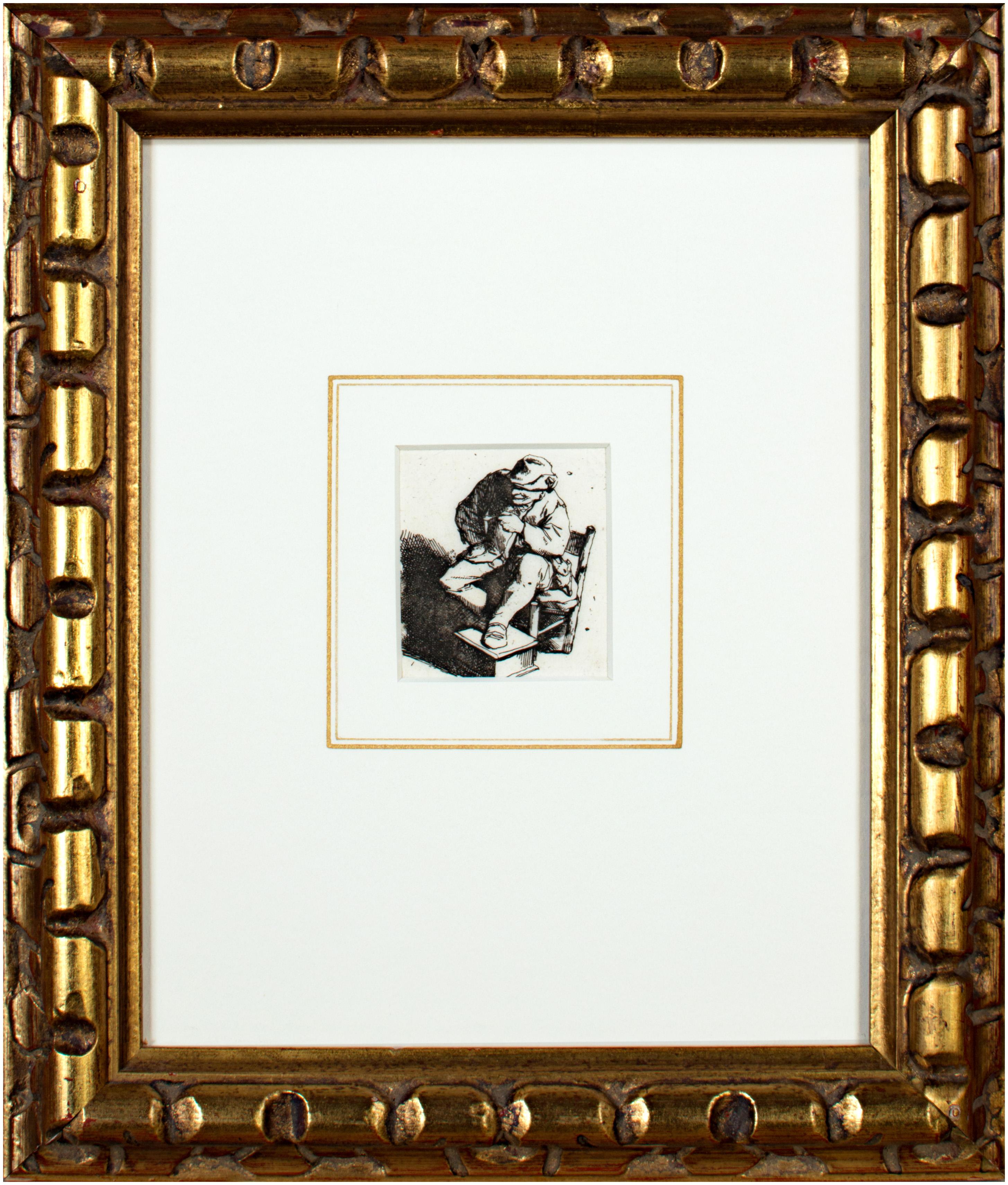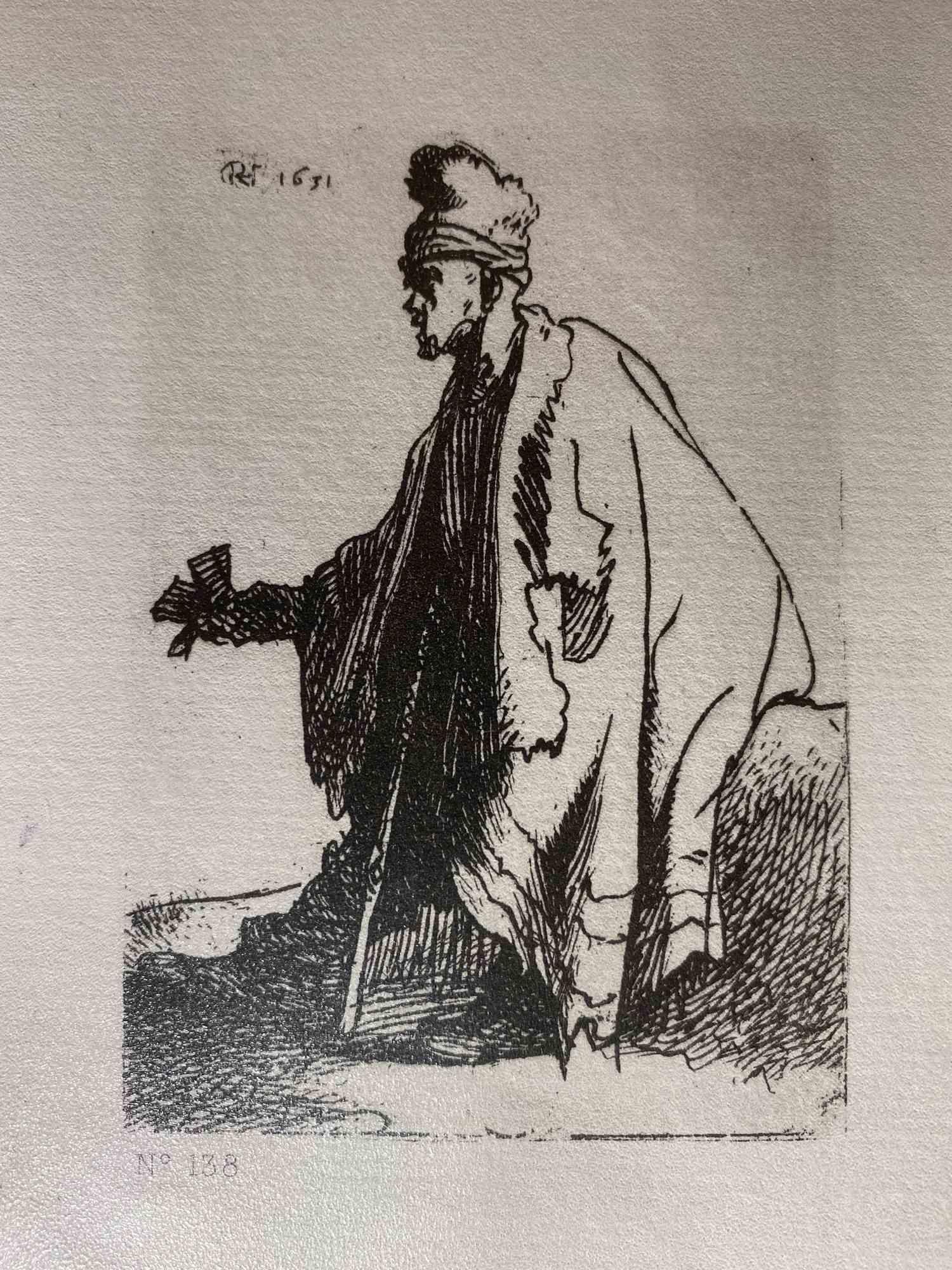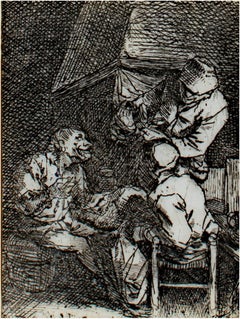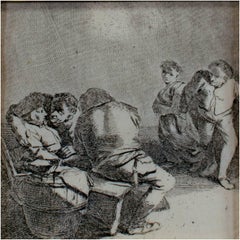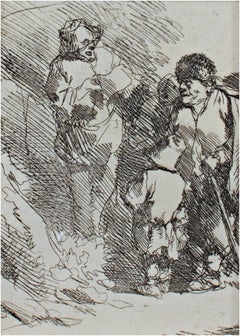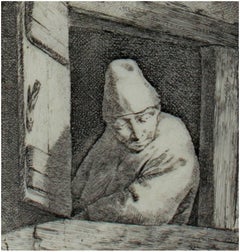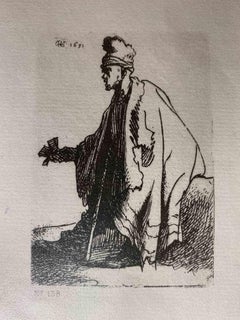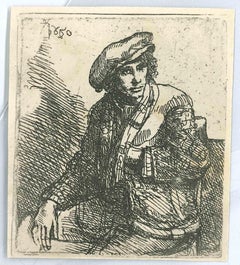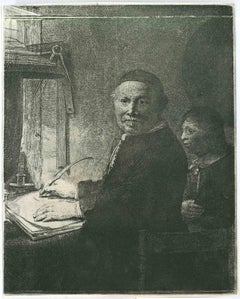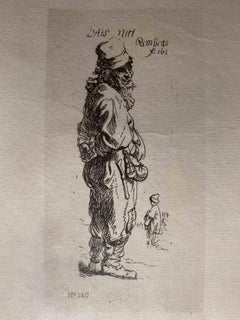Items Similar to 17th century etching black and white figure table tobacco pipe scene
Want more images or videos?
Request additional images or videos from the seller
1 of 8
Cornelis Bega17th century etching black and white figure table tobacco pipe scenecirca 1650
circa 1650
$1,700
£1,317.35
€1,494.92
CA$2,436.54
A$2,675.80
CHF 1,377.40
MX$32,016.73
NOK 17,537.33
SEK 16,435.09
DKK 11,164.68
About the Item
"The Pipe Smoker" is an original etching by Cornelis-Pietersz Bega. It depicts a man sitting at a table with his pipe. Publisher: Pearce #38.
3 1/2" x 3 1/4" art
13 5/8" x 11 3/4" frame
Cornelis Pietersz Bega, or Cornelis Pietersz Begijn (1631/1632 - 27 August 1664) was a Dutch Golden Age painter and engraver. Bega was born, lived and worked in Haarlem and was the son of sculptor and goldsmith Pieter Jansz. Begijn. His mother Maria was the illegitimate daughter of the Haarlem painter Cornelis van Haarlem. He assumed the name Bega when he started working professionally. He was a student of Adriaen van Ostade, and produced genre scenes of similar subjects, typically groups of a few peasant figures, often in interior settings, or fanciful figures such as The Alchemist (Malibu) or The Astrologer (London).
- Creator:Cornelis Bega (1631 - 1664, Dutch)
- Creation Year:circa 1650
- Dimensions:Height: 13.625 in (34.61 cm)Width: 11.75 in (29.85 cm)
- Medium:
- Movement & Style:
- Period:Mid-17th Century
- Condition:
- Gallery Location:Milwaukee, WI
- Reference Number:Seller: 10438g1stDibs: LU60532826113
About the Seller
4.9
Gold Seller
Premium sellers maintaining a 4.3+ rating and 24-hour response times
Established in 1966
1stDibs seller since 2017
452 sales on 1stDibs
Typical response time: 1 hour
- ShippingRetrieving quote...Shipping from: Milwaukee, WI
- Return Policy
More From This Seller
View All17th century etching black and white indoors table figures scene
By Cornelis Bega
Located in Milwaukee, WI
"The Conversation" is an original etching by Cornelis-Pietersz Bega. It depicts three men conversing in a dark interior. Publisher: Pearce #43.
3" x 2 1/4" art
12 3/4" x 11 5/8" fra...
Category
Mid-17th Century Old Masters Figurative Prints
Materials
Etching
17th century etching black and white indoor dramatic figures scene
By Cornelis Bega
Located in Milwaukee, WI
"The Meeting" is an original etching by Cornelis-Pietersz Bega. It depicts a confrontation between two groups of figures. Publisher: Pearce #48.
2 3/4" x 2 3/4" art
10 1/4" x 10 3/8...
Category
Mid-17th Century Old Masters Figurative Prints
Materials
Etching
17th century etching black and white figures scene
By Cornelis Bega
Located in Milwaukee, WI
"The Singer" is an original etching by Cornelis-Pietersz Bega. It depicts a performer and onlookers. Publisher: Pearce #50.
4" x 3" art
16 1/2" x 13 1/2" frame
Cornelis Pietersz Be...
Category
Mid-17th Century Old Masters Figurative Prints
Materials
Etching
17th century etching black and white dramatic window figure scene
By Cornelis Bega
Located in Milwaukee, WI
"Man Looking Through a Window" is an original etching by Cornelis-Pietersz Bega. It depicts a figure leaning through a window. Publisher: Pearce #37.
3 1/8" x 3" art
14 3/4" x 13 1/...
Category
Mid-17th Century Old Masters Figurative Prints
Materials
Etching
'The Smoker (Le Fumeur)' original etching by Cornelis-Pietersz Bega
By Cornelis Bega
Located in Milwaukee, WI
'The Smoker (Le Fumeur)' is an original etching by the celebrated Dutch painter and printmaker Cornelis-Pietersz Bega. It presents a genre scene of the type Bega was best known for: Bega's principal subjects were genre representations of taverns, domestic interiors and villages. He depicted nursing mothers, prostitutes, drunks, gamblers and fools such as quack doctors and alchemists. In this case, he shows a man seated on a chair with his foot on a flat stool and holding a smoking pipe. For Bega, this representation was more of a caricature than it was an image of a specific person, and such genre scenes would have held allegorical and symbolic meaning for the seventeenth-century viewer. During the seventeenth century, the Dutch of all levels of society consumed tobacco and alcohol, and these were an important part of the Dutch economy and a major source of wealth. At the same time, however, moralists and ministers sought to curb intoxication: they openly described drinking and smoking as sinful, immoral, and a general threat to one’s reputation. This paradox is reflected in prints such as this, which inherently carry the national pride of the Dutch economy alongside a moral warning in a print that could be just as easily consumed and collected.
2.5 x 2.25 inches, print
12.38 x 10.38 inches, frame
Framed to conservation standards using archival materials including 100 percent rag matting and mounting materials. Housed in a gold finish Spanish-style wood moulding.
Overall good and stable condition; margins cut to plate; some wrinkling in the corners from previous mounting; housed in a new custom frame.
Cornelis Bega was born into prosperous circumstances. His mother, Maria Cornelis, inherited half the estate (gold, silver, paintings, drawings and prints) and all of the red chalk drawings of her father, Cornelis Cornelisz van Haarlem, a renowned Mannerist artist. Bega's father was Pieter Jansz Begijn (d 1648), a gold and silversmith.
Like other family members, Bega was probably Catholic. Houbraken's claim that Bega studied with Adriaen van Ostade is likely to be correct; this was probably before 24 April 1653, when Bega joined Vincent Laurentsz. van der Vinne in Frankfurt for a journey through Germany, Switzerland and France. Bega had returned to Haarlem by 1 September 1654, at which time he joined the Guild of St Luke; he was already a competent draughtsman, as indicated by his first extant dated work, Interior with a Nursing Mother (1652; Frankfurt am Main, Städel. Kstinst.), and by a remarkable double portrait (Amsterdam, Rijksmuseum) drawn by him and Leendert van der Cooghen in 1654.
Bega painted, drew, etched and made counterproofs in a wide variety of materials on different types of small-scale supports. He may have been the first Dutch artist to make monotypes, but this remains controversial. Approximately 160 paintings, 80 drawings and six monotypes by Bega have been catalogued, as well as around 34 etchings.
Bega's principal subjects were genre representations of taverns, domestic interiors and villages. He depicted nursing mothers, prostitutes, drunks, smokers, gamblers and fools such as quack doctors and alchemists. Less common subjects include the ridiculed or pestered woman, as in Two Figures and Mother with a Spirits Bottle (c. 1662; Gouda, Stedel, Museum Catharina Gasthuis) and The Inn (etching), as well as witty satires on traditional scenes of middle-class music-makers, such as the Music Lesson (1663; Paris, Petit Palace).
Bega's early paintings, such as the Weaver's Family (c. 1652; St Petersburg, Hermitage), are freely executed, dark and coarse, recalling the many-figured peasant subjects of van Ostade. Between c. 1660 and 1664 he began to paint genre scenes with fewer figures, which are finely articulated, colourful and psychologically expressive, for example Two Men Singing (1662; Dublin, N.G.). His exquisite, late fijnschilderen ('fine painting') manner, evident in The Alchemist (1663; Malibu, Getty Museum), compares well with that of Gerrit Dou.
As a draughtsman Bega is noted for his single-figure studies, executed mainly in black and white chalk on blue paper or red chalk on white paper. None of the studies, which were drawn naer het leven (from life), seem to relate to a painting or etching. Bega traded drawings or shared models with other artists of the Haarlem school, including van der Cooghen, Gerrit Berckheyde, Dirck Helmbreker and Cornelis Visscher. These artists drew chalk figure studies in a very similar style, characterised by regular and precise parallel shading and well-defined forms; their drawings, especially those of Bega and Berckheyde, have been frequently confused. Unlike the realistic figure studies, Bega's etchings depict interiors with figures or single figures in the manner of van Ostade; the compositions, often with masterful chiaroscuro effects, reflect most closely the paintings of the 1650s.
Bega is likely to have remained in Haarlem, where he paid dues to the Guild in 1661. He probably died from the plague; fees for his expensive funeral at St. Bavo's were paid on 30 August 1664. Among the artists he influenced were Thomas Wijck, Jan Steen, Richard Brakenburg (1650-1702) and Cornelis Dusart. Painters such as R. Oostrzaen ( fl ?1656) and Jacob Toorenvliet...
Category
17th Century Old Masters Figurative Prints
Materials
Paper, Etching
17th century etching black and white figurative character print expressive
By Jan Gillisz van Vliet
Located in Milwaukee, WI
Jan Gillisz van Vliet (1605–1668) was a Dutch Golden Age artist and student of Rembrandt. He worked with Rembrandt between 1628 and 1637, inspired by his master's work. Like Rembrandt, van Vliet made a series of beggar figures, though often with a greater degree of satire and expressiveness. For example, this image of a rat catcher...
Category
1630s Old Masters Figurative Prints
Materials
Etching
You May Also Like
The Leper - Engraving after Rembrandt - 19th Century
By Charles Amand Durand
Located in Roma, IT
The Leper is an engraving on ivory-colored paper realized by Charles Amand Durand (1831-1905) after an etching by Rembrandt. This wonderful piece of art belongs to a late edition of ...
Category
19th Century Old Masters Figurative Prints
Materials
Engraving
Zittende Jongeman Met Een Tas - Engraving after Rembrandt - 19th Century
By Charles Amand Durand
Located in Roma, IT
Zittende jongeman met een tas is an engraving on ivory-colored paper realized by Charles Amand Durand after an etching by Rembrandt dated 1650. This wonderful piece of art belongs to...
Category
19th Century Old Masters Figurative Prints
Materials
Engraving
Lieven Willemsz van Coppenol - Engraving after Rembrandt - 19th Century
By Charles Amand Durand
Located in Roma, IT
Lieven Willemsz van Coppenol: the Smaller Plate is an engraving on ivory-colored paper realized by Charles Amand Durand after an etching by Rembrandt dated 1658 ca. This wonderful pi...
Category
19th Century Old Masters Figurative Prints
Materials
Engraving
A Peasant Calling Out - Engraving after Rembrandt - 19th Century
By Charles Amand Durand
Located in Roma, IT
A Peasant Calling Out: "tis vinnich kout" (It's biting cold) is an engraving on ivory-colored paper realized by Charles Amand Durand (1831-1905) after an etching by Rembrandt. This w...
Category
19th Century Old Masters Figurative Prints
Materials
Engraving
Beggar in a High Cap - Engraving after Rembrandt - 19th Century
By Charles Amand Durand
Located in Roma, IT
Beggar in a High Cap, Standing and Leaning on a Stick is an engraving on ivory-colored paper realized bu Charles Amand Durand after an etching by Rembrandt dated 1630. This wonderful...
Category
19th Century Old Masters Figurative Prints
Materials
Engraving
A Man Making Water - engraving after Rembrandt - 19th Century
By Charles Amand Durand
Located in Roma, IT
A Man Making Water is an engraving on ivory-colored paper realized by Charles Amand Durand (1831-1905) after an etching by Rembrandt. This wonderful piece of art belongs to a late ed...
Category
19th Century Old Masters Figurative Prints
Materials
Engraving
More Ways To Browse
Antique Tobacco Table
August Holland
Salvador Dali Litho
Salvador Dali Lobster
Salvador Dali Mao
Salvador Dali Melting Clock
Salvador Dali Pig
Salvador Dali Shakespeare
Salvador Dali Woman With A Whip
Sascha Schneider
Sean Caulfield
Sebastien Leclerc
Shabbat Shalom
Shag Agle
Shalom Moskowitz Shalom Of Safed
Shepard Fairey Oil
Spoleto Poster
Stag Salvador Dali
